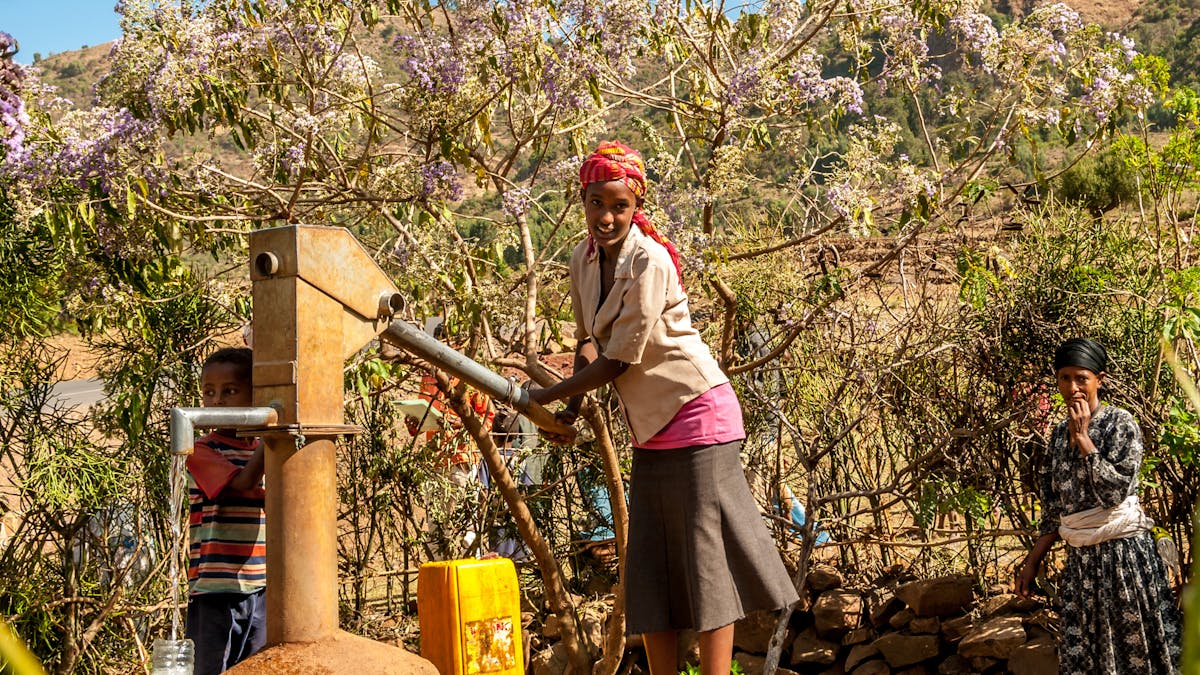Another alternative? Tapping into the potential of groundwater in Kenya
Looking beyond the experiences discussed in Uganda and Ethiopia, this post seeks to explore the potential of groundwater to tackle the issue of water and food insecurities in Kenya.
With Africa largely painted as a continent with fast depleting water resources, it is of utmost importance to explore alternative reliable sources of water for irrigation. Often regarded as one of the most neglected. and hidden assets, groundwater reserves may in fact have the potential to provide clean water amidst the increasingly unpredictable climate events. This is further highlighted in a recent UN report addressing the possibility of groundwater to help alleviate problems surrounding water scarcity.
Despite playing a major role in increasing food production since the 1970s in semi-arid and arid conditions, it is of significant urgency to expand the intensification of sustainable groundwater extraction in order to reach the growing agricultural demands today. However, despite this acknowledgement, estimates show that roughly 1% of Africa’s agriculture uses groundwater for irrigation, thus hinting at the potential underutilisation of this resource.
Figure 1: Map of Africa showing the potential of groundwater storage on the continent
The expansive potential for groundwater use in Africa can be highlighted in Figure 1. It has the potential to play a fundamental role in supporting large parts of the African population, especially as groundwater remains largely uncontaminated. This is due to the physical environment underground where minerals and rocks often act as filtration systems, thus reducing the need for excessive amounts of post-treatment for the water. Furthermore, during unreliable rainfall patterns, groundwater may serve as a dependable supply of water for growing demands in irrigation and food production. By doing so, groundwater can be of vital importance to helping reach SDG Goal 6 by providing clean water supplies.
However, in order to explore further, let’s look at Nairobi, Kenya. Nairobi is a nation that boasts a population of around 4.7 million people, and has long suffered from water scarcity problems due to rising water demands, droughts and poor management of water supplies. Recently, with four consecutive seasons of rainfall failing, this has largely hindered the ability to secure food supplies in Kenya, giving rise to the hunger crisis being experienced.
As a result, there has been rapid groundwater developments seen in many large cities across Africa, including Addis Ababa, Ethiopia and Nairobi, Kenya. Despite this, much of the irrigation in Nairobi still depends on surface water, with a small amount of irrigation using groundwater supplies. However, as groundwater is quite easily accessible in Kenya through boreholes, wells, and pumps, it can significantly help rural and urban populations reach a stable supply of clean water. This can play a crucial role in expanding irrigation supplies to help grow maize, provide Kenya with their staple food - ugali, and thus improve food security for the nation.
What is most notable, is that much of Africa is currently experiencing what is known as ‘economic water scarcity’, whereby water resources are available, but the lack of infrastructural investment hinders the ability to reach these water supplies. This is no different in Kenya, where localised efforts to extract groundwater resources are unable to help meet larger-scale irrigation demands.
However, there are many challenges that lie ahead with respect to groundwater sustainability and management. In the case of the Nairobi Aquifer System (NAS) which hosts over 6 million people, rapid urban population growth in Nairobi has resulted in groundwater levels continuing to fall at a rate of 6 metres per decade since the 1950s. This serves as a key reminder that groundwater must be extracted in a sustainable manner, as current modelling trends show that continued exploitive extraction may result in decreased groundwater storage, and potentially seasonal flows in rivers and springs only during rainy seasons.
Challenges looking ahead
However, there are many challenges that lie ahead with respect to groundwater sustainability and management. In the case of the Nairobi Aquifer System (NAS) which hosts over 6 million people, rapid urban population growth in Nairobi has resulted in groundwater levels continuing to fall at a rate of 6 metres per decade since the 1950s. This serves as a key reminder that groundwater must be extracted in a sustainable manner, as current modelling trends show that continued exploitive extraction may result in decreased groundwater storage, and potentially seasonal flows in rivers and springs only during rainy seasons.
Moreover, cases such as the discovery of Turkana water aquifer in Kenya highlight the need for technological improvements to provide an economically viable option to process groundwater resources. Discovered in 2013, efforts to use the 250 billion cubic metres aquifer has since been abandoned in 2022 due to the high cost of desalinisation.
Thus, in order for groundwater to be a reliable source of water for irrigation, there is an increased need for better investments for groundwater data monitoring and infrastructure to ensure sustainable extraction of groundwater resources.



Comments
Post a Comment